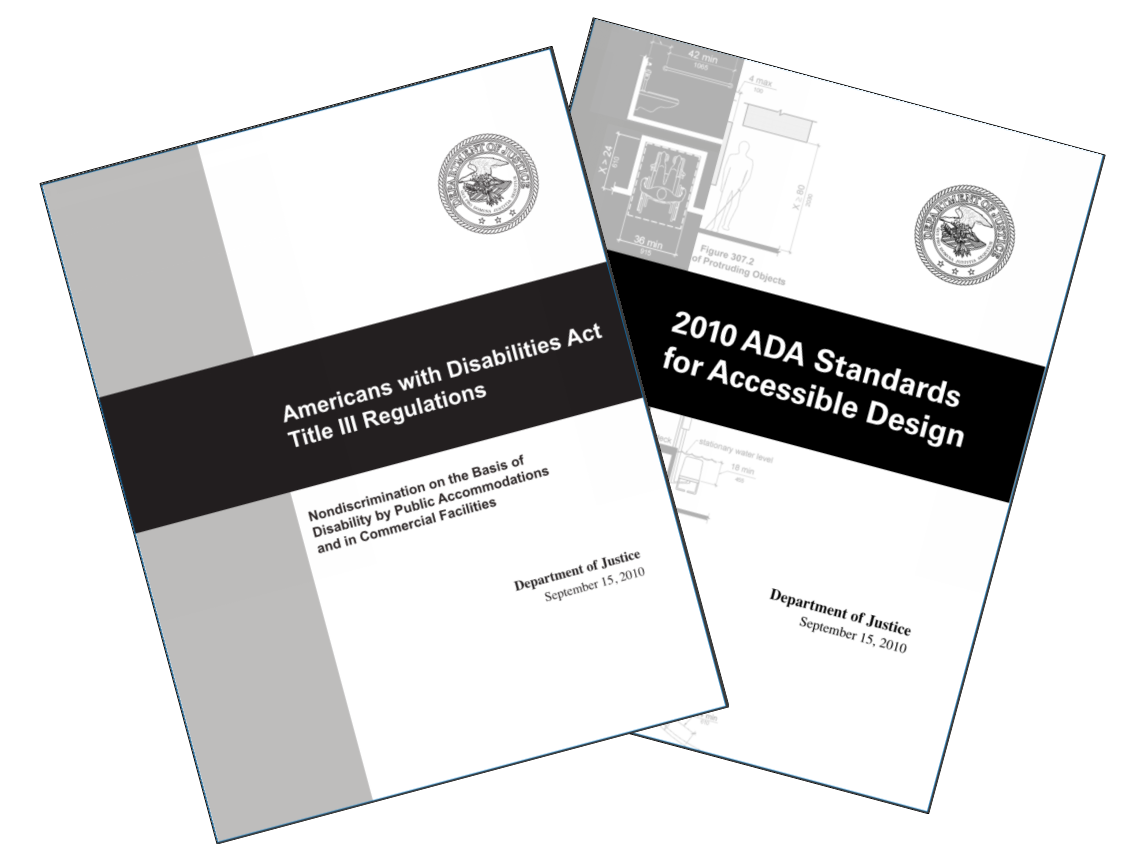

Blog
Myth: Following the accessibility requirements of the building code will satisfy the accessibility requirements of the Americans with Disabilities Act.

The Americans with Disabilities Act (ADA) was signed into law on July 26, 1990. This federal civil rights law prohibits discrimination based on disability and declares that people with disabilities must have equal access to all areas of public life, including employment, public services, public accommodations, and telecommunications.

One year later, on July 26, 1991, the Department of Justice released the 1991 ADA Standards for Accessible Design to be used in the design and construction of new and altered buildings. These technical standards have since been replaced with the 2010 ADA Standards for Accessible Design that we use today.
Despite the importance of the ADA and its enforcement over the past three decades, there are still misconceptions about what the law requires for buildings and facilities.
Below are five of the most common misconceptions that SWA’s accessibility consultants encounter when working with building designers, developers, and owners on ADA compliance.
Unlike building codes, the ADA does not allow for the concept of “grandfathering.” According to the ADA, building owners and managers have the ongoing obligation to remove barriers to access for people with disabilities, no matter the age of a building. Specifically, if a barrier to access exists in a building that predates the ADA, there is an obligation to remove the barrier if it is readily achievable to do so.
“Readily achievable” means that fixing the barrier does not involve too much difficulty or expense. Such determinations must be made on a case-by-case basis and consider many factors, including financial resources.
Even though the 2010 ADA Standards for Accessible Design are similar to the technical standards referenced by many building codes (e.g., A117.1 Standard for Accessible and Usable Buildings and Facilities), they are mutually exclusive. Compliance with the accessibility requirements of the building code does not satisfy compliance with the accessibility requirements of the ADA; and vice versa.
The general rule of thumb is to apply all applicable laws, codes, and standards and comply with the most stringent requirement.
There is no official certification available for ADA-compliant products, nor does the U.S. Department of Justice (DOJ) certify buildings as meeting the requirements of the ADA.
A product manufacturer’s claim of ADA compliance is not reviewed or approved by the DOJ, and often, claims of ADA compliance made by manufacturers are not correct. Architects and designers must carefully review the details and dimensions and provide context for installation to ensure compliance.
In short, buyer beware when selecting products.
The term “ADA” is often used as shorthand for anything related to accessibility, yet the ADA does not apply to many types of facilities.
For example, although a newly constructed market-rate multifamily residential building that includes only dwelling units and resident amenities is required to be accessible under the Fair Housing Act and local building codes, it is not required to comply with the ADA.
Compliance with the ADA is only required to the extent that the ADA applies. Understanding project scoping is key to determining which laws and/or codes apply.
While it is true that the ADA Standards cover fixed or built-in elements, the broader mandate of the ADA regulations requires equal access. Put another way, the ADA Standards are focused on the built environment—much like a building code—and the ADA is a civil rights law that has an overarching objective of ensuring equitable use for all.
This means that although the Standards may not specifically cover movable furnishings, the regulations may cover movable tables in a restaurant to provide equal access to all patrons.
Have a question about the Americans with Disabilities Act? Contact us!
Contributor: Andy Yarrish, Senior Accessibility Consultant at SWA
Steven Winter Associates